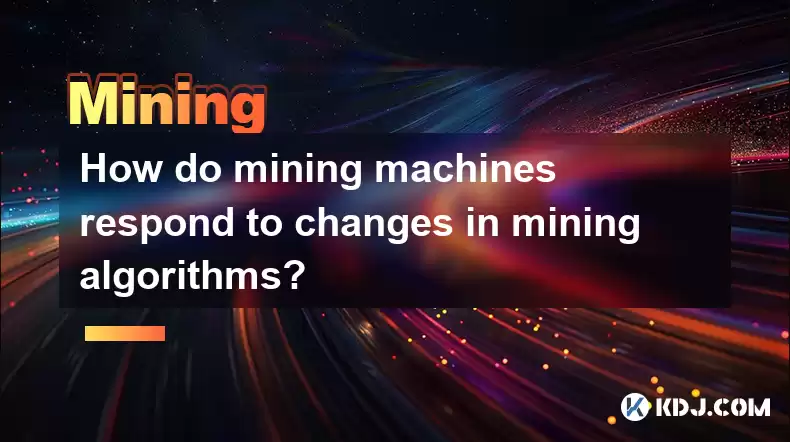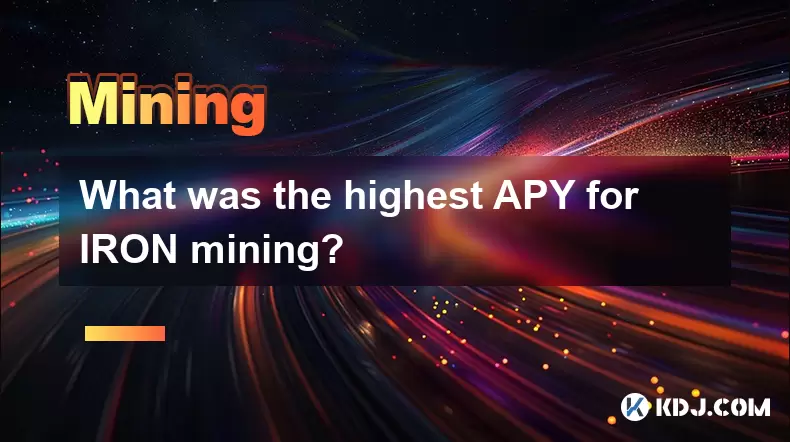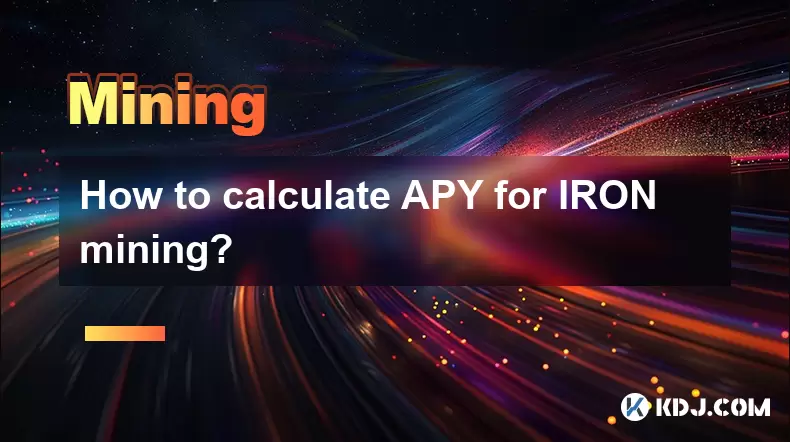-
 Bitcoin
Bitcoin $115000
0.12% -
 Ethereum
Ethereum $3701
4.50% -
 XRP
XRP $3.081
2.99% -
 Tether USDt
Tether USDt $0.0000
-0.01% -
 BNB
BNB $767.9
1.45% -
 Solana
Solana $169.5
3.13% -
 USDC
USDC $0.9999
0.01% -
 Dogecoin
Dogecoin $0.2106
4.30% -
 TRON
TRON $0.3334
1.62% -
 Cardano
Cardano $0.7564
2.54% -
 Stellar
Stellar $0.4165
0.76% -
 Hyperliquid
Hyperliquid $38.75
0.25% -
 Sui
Sui $3.593
3.00% -
 Chainlink
Chainlink $17.08
3.59% -
 Bitcoin Cash
Bitcoin Cash $573.6
4.35% -
 Hedera
Hedera $0.2508
-0.84% -
 Avalanche
Avalanche $23.07
6.46% -
 Ethena USDe
Ethena USDe $1.001
-0.02% -
 Litecoin
Litecoin $120.8
8.17% -
 UNUS SED LEO
UNUS SED LEO $8.943
-0.32% -
 Toncoin
Toncoin $3.400
-5.60% -
 Shiba Inu
Shiba Inu $0.00001255
1.54% -
 Uniswap
Uniswap $9.908
6.32% -
 Polkadot
Polkadot $3.718
2.10% -
 Monero
Monero $303.0
-0.74% -
 Dai
Dai $0.9999
-0.02% -
 Bitget Token
Bitget Token $4.392
0.91% -
 Cronos
Cronos $0.1403
6.31% -
 Pepe
Pepe $0.00001076
1.13% -
 Aave
Aave $267.2
1.80%
How do mining machines respond to changes in mining algorithms?
Mining machines adapt to algorithm changes via firmware updates, hardware mods, and software tweaks, impacting miners' profitability and requiring strategic responses.
Apr 03, 2025 at 07:07 am

Mining machines are essential components of the cryptocurrency ecosystem, particularly for Proof of Work (PoW) blockchains like Bitcoin. These machines are designed to solve complex mathematical problems to validate transactions and add them to the blockchain. However, the algorithms that govern these mining processes can change, impacting the efficiency and profitability of mining operations. This article explores how mining machines respond to changes in mining algorithms, detailing the technical adjustments, economic implications, and strategic responses that miners must consider.
Technical Adjustments to Algorithm Changes
When a mining algorithm changes, mining machines must adapt to maintain their effectiveness. The primary technical adjustments include firmware updates, hardware modifications, and software reconfigurations.
Firmware Updates: Mining machines often require firmware updates to align with new algorithms. These updates can be provided by the manufacturer or developed by the mining community. For instance, when Ethereum transitioned from Ethash to ProgPoW, miners needed to update their firmware to continue mining efficiently.
Hardware Modifications: Some algorithm changes may necessitate hardware upgrades or modifications. For example, a shift to a more memory-intensive algorithm might require miners to add more RAM to their machines. This can be costly and time-consuming but is essential for maintaining competitiveness.
Software Reconfigurations: Miners may need to reconfigure their mining software to adapt to new algorithms. This involves adjusting settings such as hash rates, power consumption, and cooling systems to optimize performance under the new conditions.
Economic Implications of Algorithm Changes
Algorithm changes can have significant economic implications for miners. These changes can affect the profitability of mining operations, the cost of mining, and the overall market dynamics.
Profitability: A change in the mining algorithm can alter the difficulty level of mining, which directly impacts profitability. If the new algorithm is more complex, it may reduce the number of blocks a miner can solve, thereby decreasing their earnings. Conversely, a simpler algorithm might increase profitability by allowing miners to solve more blocks.
Cost of Mining: Upgrading hardware or software to adapt to a new algorithm can be expensive. Miners must weigh the cost of these upgrades against the potential increase in earnings. In some cases, the cost of adaptation may outweigh the benefits, leading miners to abandon certain cryptocurrencies.
Market Dynamics: Algorithm changes can influence the overall market dynamics of a cryptocurrency. For instance, if a change makes mining more accessible to a broader range of participants, it could lead to increased competition and a more decentralized network. Conversely, if the change favors large-scale miners with more resources, it could lead to greater centralization.
Strategic Responses to Algorithm Changes
Miners must develop strategic responses to effectively navigate changes in mining algorithms. These strategies can include diversifying mining operations, staying informed about upcoming changes, and engaging with the mining community.
Diversification: One effective strategy is to diversify mining operations across multiple cryptocurrencies. This can help mitigate the risk associated with algorithm changes in any single cryptocurrency. By mining different coins, miners can spread their risk and potentially increase their overall profitability.
Staying Informed: Miners must stay informed about upcoming algorithm changes. This involves following official announcements from cryptocurrency developers, participating in community forums, and monitoring industry news. Being proactive in understanding potential changes can help miners prepare and adapt more effectively.
Community Engagement: Engaging with the mining community can provide valuable insights and support during algorithm changes. Miners can share experiences, solutions, and best practices with each other. This collaborative approach can help miners navigate challenges more effectively and find innovative ways to adapt to new algorithms.
Case Studies of Algorithm Changes
Examining specific case studies can provide a clearer understanding of how mining machines respond to algorithm changes. Two notable examples are the changes in Bitcoin's mining algorithm and Ethereum's transition to Ethereum 2.0.
Bitcoin's Mining Algorithm Changes: Bitcoin has undergone several changes to its mining algorithm over the years, primarily through adjustments to the difficulty level. These changes have impacted the efficiency of mining machines, requiring miners to upgrade their hardware to maintain competitiveness. For instance, the introduction of ASIC miners significantly increased the hash rate, making older GPU miners obsolete.
Ethereum's Transition to Ethereum 2.0: Ethereum's planned transition to Ethereum 2.0 involves a shift from Proof of Work to Proof of Stake. This change will render current mining machines obsolete, as they are designed for PoW. Miners must either transition to staking or find alternative cryptocurrencies to mine. This case study highlights the importance of staying informed and being prepared for significant algorithm changes.
The Role of Manufacturers in Algorithm Changes
Mining machine manufacturers play a crucial role in helping miners adapt to algorithm changes. They provide firmware updates, develop new hardware, and offer support to their customers during transitions.
Firmware Updates: Manufacturers often release firmware updates to ensure their machines remain compatible with new algorithms. These updates can be critical for miners looking to maintain their mining operations without significant hardware changes.
New Hardware Development: In response to algorithm changes, manufacturers may develop new hardware designed to optimize performance under the new conditions. For example, if a new algorithm is more memory-intensive, manufacturers might release machines with increased RAM to meet the new requirements.
Customer Support: Manufacturers provide customer support to help miners navigate algorithm changes. This can include technical assistance, guidance on upgrades, and information about upcoming changes. Strong support from manufacturers can be invaluable for miners during transitions.
The Impact of Algorithm Changes on Mining Pools
Mining pools, which allow individual miners to combine their resources and share rewards, are also affected by algorithm changes. These changes can influence the operations and strategies of mining pools.
Pool Adjustments: Mining pools must adjust their operations to accommodate new algorithms. This can involve updating their software, reconfiguring their hardware, and adjusting their reward distribution systems. Pools that adapt quickly can maintain their competitiveness and attract more miners.
Pool Strategies: Some mining pools may develop strategies to mitigate the impact of algorithm changes. For example, they might diversify their mining operations across multiple cryptocurrencies or invest in research and development to stay ahead of upcoming changes. These strategies can help pools remain profitable and attractive to miners.
Miner Impact: Algorithm changes can influence the decisions of individual miners regarding which pools to join. Miners may prefer pools that have a track record of adapting quickly to changes and offering competitive rewards. This can lead to shifts in the distribution of mining power across different pools.
The Future of Mining Algorithms and Machines
As the cryptocurrency industry continues to evolve, mining algorithms and machines are likely to undergo further changes. These changes will be driven by technological advancements, security concerns, and the need for greater efficiency and sustainability.
Technological Advancements: Advances in technology, such as the development of more powerful and energy-efficient hardware, will influence the design of mining machines. These advancements can help miners adapt more easily to algorithm changes and maintain their profitability.
Security Concerns: Changes in mining algorithms may be driven by the need to enhance the security of blockchain networks. For example, if a particular algorithm is found to be vulnerable to attacks, developers may introduce a new algorithm to address these vulnerabilities. Miners must be prepared to adapt their machines to these security-driven changes.
Efficiency and Sustainability: The push for greater efficiency and sustainability in mining operations will also drive changes in algorithms and machines. As the environmental impact of mining becomes a more significant concern, developers may introduce algorithms that require less energy to solve. Miners will need to adapt their machines to these more sustainable algorithms to remain competitive.
Common Questions Related to Mining Machines and Algorithm Changes
Q: How do miners find out about upcoming algorithm changes?
A: Miners can stay informed about upcoming algorithm changes by following official announcements from cryptocurrency developers, participating in community forums, and monitoring industry news. Engaging with the mining community can also provide valuable insights and early warnings about potential changes.
Q: What are the costs associated with adapting to new mining algorithms?
A: The costs of adapting to new mining algorithms can include the expense of firmware updates, hardware upgrades, and software reconfigurations. Miners must weigh these costs against the potential increase in earnings to determine the feasibility of adaptation.
Q: Can miners continue using their existing machines after an algorithm change?
A: It depends on the nature of the algorithm change. Some changes may require significant hardware upgrades, rendering existing machines obsolete. However, in other cases, miners may be able to adapt their existing machines through firmware updates and software reconfigurations.
Q: How do mining pools respond to algorithm changes?
A: Mining pools respond to algorithm changes by updating their software, reconfiguring their hardware, and adjusting their reward distribution systems. Some pools may also develop strategies to mitigate the impact of changes, such as diversifying their mining operations or investing in research and development.
Q: What role do manufacturers play in helping miners adapt to algorithm changes?
A: Manufacturers play a crucial role by providing firmware updates, developing new hardware, and offering customer support. These resources can help miners navigate algorithm changes more effectively and maintain their mining operations.
Q: How can miners mitigate the risks associated with algorithm changes?
A: Miners can mitigate the risks associated with algorithm changes by diversifying their mining operations across multiple cryptocurrencies, staying informed about upcoming changes, and engaging with the mining community. These strategies can help miners adapt more effectively and maintain their profitability.
Disclaimer:info@kdj.com
The information provided is not trading advice. kdj.com does not assume any responsibility for any investments made based on the information provided in this article. Cryptocurrencies are highly volatile and it is highly recommended that you invest with caution after thorough research!
If you believe that the content used on this website infringes your copyright, please contact us immediately (info@kdj.com) and we will delete it promptly.
- Velo Universe, DEX, and DeFi Security: Navigating the Future of Decentralized Trading
- 2025-08-05 09:25:13
- Bitget Wallet Revolutionizes Solana with Gas-Free Transactions: A New Era for DeFi
- 2025-08-05 09:25:13
- Ozak AI, Crypto Boom, and ROI Potential: Is This the Next Big Thing?
- 2025-08-05 09:25:24
- Solana's ETF Hopes & the All-Time High Chase: Is SOL Set to Soar?
- 2025-08-05 09:25:24
- Coinbase's Brian Armstrong and the Art of Focused Work: A Deep Dive
- 2025-08-05 09:25:30
- Uniswap Price Prediction: Bullish Reversal on the Horizon?
- 2025-08-05 09:25:30
Related knowledge

What was the highest APY for IRON mining?
Jul 23,2025 at 05:14am
Understanding IRON Token and Its Mining MechanismThe IRON token is a stablecoin that operates within the Iron Finance ecosystem, primarily on blockcha...

What is impermanent loss in IRON pools?
Jul 23,2025 at 09:00am
Understanding Impermanent Loss in the Context of IRON PoolsImpermanent loss is a phenomenon that affects liquidity providers in decentralized finance ...

How to claim rewards from IRON mining?
Jul 23,2025 at 02:21pm
Understanding IRON Mining and Reward MechanismsIRON Finance operated as a decentralized finance (DeFi) protocol on the Polygon and Binance Smart Chain...

How to claim rewards from IRON mining?
Jul 29,2025 at 05:07am
Understanding IRON Mining and Reward MechanismIRON is a dual-token system designed to stabilize the value of a synthetic asset through a combination o...

IRON mining tutorial for beginners
Jul 27,2025 at 12:01am
What Is IRON and How Does It Work in the Cryptocurrency Ecosystem?IRON is a cryptocurrency token that operates on the Binance Smart Chain (BSC) and is...

How to calculate APY for IRON mining?
Jul 28,2025 at 09:49am
Understanding APY in the Context of IRON Token MiningWhen engaging in IRON token mining within decentralized finance (DeFi) platforms, Annual Percenta...

What was the highest APY for IRON mining?
Jul 23,2025 at 05:14am
Understanding IRON Token and Its Mining MechanismThe IRON token is a stablecoin that operates within the Iron Finance ecosystem, primarily on blockcha...

What is impermanent loss in IRON pools?
Jul 23,2025 at 09:00am
Understanding Impermanent Loss in the Context of IRON PoolsImpermanent loss is a phenomenon that affects liquidity providers in decentralized finance ...

How to claim rewards from IRON mining?
Jul 23,2025 at 02:21pm
Understanding IRON Mining and Reward MechanismsIRON Finance operated as a decentralized finance (DeFi) protocol on the Polygon and Binance Smart Chain...

How to claim rewards from IRON mining?
Jul 29,2025 at 05:07am
Understanding IRON Mining and Reward MechanismIRON is a dual-token system designed to stabilize the value of a synthetic asset through a combination o...

IRON mining tutorial for beginners
Jul 27,2025 at 12:01am
What Is IRON and How Does It Work in the Cryptocurrency Ecosystem?IRON is a cryptocurrency token that operates on the Binance Smart Chain (BSC) and is...

How to calculate APY for IRON mining?
Jul 28,2025 at 09:49am
Understanding APY in the Context of IRON Token MiningWhen engaging in IRON token mining within decentralized finance (DeFi) platforms, Annual Percenta...
See all articles

























































































